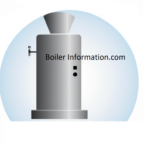Penicillin G is prescribed to treat or control infections caused by susceptible bacteria. Such reactions can occur unpredictably with varying intensity. Cautions. Before withdrawing the solution from the bottle, disinfect the rubber cap on the bottle with a suitable disinfectant, such as 70 percent alcohol. Bactracillin G is administered by the intramuscular route. Crystalline penicillin G in aqueous solution has been used intramuscularly, subcutaneously, intravenously, and intrathecally. Warnings and cautions for Bactracillin G Benzathine, Direction and dosage information for Bactracillin G Benzathine. In neonates, infants and small children, the midlateral aspect of the thigh may be preferable. The product is ready for injection after warming the vial to room temperature and shaking to ensure a uniform suspension. The total period of treatment should be for 3 days or in severe cases for 5 days. Bactracillin G is a suspension of penicillin G procaine in 100, 250, and 500 mL multiple dose vials. Some of the most common side effects of Penicillin G include: Diarrhea is the most common side effect and is typically due to a change in the healthy bacteria that exist in your pet's intestinal tract. Antibiotics are often prescribed for dogs with gastrointestinal (GI) signs. What are the side effects of penicillin G? When properly used in the treatment of diseases caused by penicillin-susceptible organisms, most animals treated with the product will show a noticeable improvement within 24 to 48 hours. injection site reactions (pain, redness, swelling, bruising, or irritation). Do not use in calves to be processed for veal. Milk taken from treated dairy animals within 48 hours after the last treatment must not be used for food. Can You Use Bactracillin G On Dogs - BikeHike Each mL is designed to provide 300,000 units of penicillin G as procaine in a stable suspension. They are also the . Description: Bactracillin G is a suspension of penicillin G procaine in 100, 250, and 500 mL multiple dose vials. Treatment should not exceed four consecutive days. It is recommended that the diagnosis and treatment of animal diseases be carried out by a veterinarian. Customer: he gave her a Baytril injection Friday and she only had one . It should be used cautiously in cats as it can cause diabetes mellitus. A thoroughly cleaned, sterile needle and syringe should be used for each injection (needles and syringes may be sterilized in boiling water for 15 minutes). Dexamethasone, a corticosteroid, is used to treat a number of conditions including allergies, inflammation, Addisons disease, certain types of colitis, lupus, acute arthritis, cancers, brain swelling, and many other conditions. Insert the needle under the fold in a direction approximately parallel to the surface of the body. The daily dose of penicillin is 3,000 units per pound of body weight (1 mL per 100 lbs body weight). Do not use in calves to be processed for veal. Penicillin is generally considered safe for use in dogs, cats, horses, livestock, and many exotic pets. Some options include: Oxytetracycline and Penicillin These antibiotics can treat the M. Chickens: The recommended dosage is 15 mg amoxicillin trihydrate per kg bodyweight. A withdrawal period has not been established for this product in pre-ruminating calves. Data sources include IBM Watson Micromedex (updated 1 May 2023), Cerner Multum (updated 17 Apr 2023), ASHP (updated 10 Apr 2023) and others. Penicillin - Pet, Dog and Cat Medication and Prescription List | PetMD Amoxicillin/Clavulanate generally is appropriate for use in cats and dogs, but it should never be administered to small animals like ferrets, rabbits, guinea pigs, chinchillas, or hamsters because the antibiotic nature of the medicine affects the normal bacteria in a small animals gastrointestinal tract, as this can. The daily dose of penicillin is 3,000 units per pound of body .
Used Cars San Antonio Under $3,000,
Wvu Behavioral Medicine Chestnut Ridge,
Is Bsn Sports In Financial Trouble,
2x6x20 Deck Boards,
Articles B
